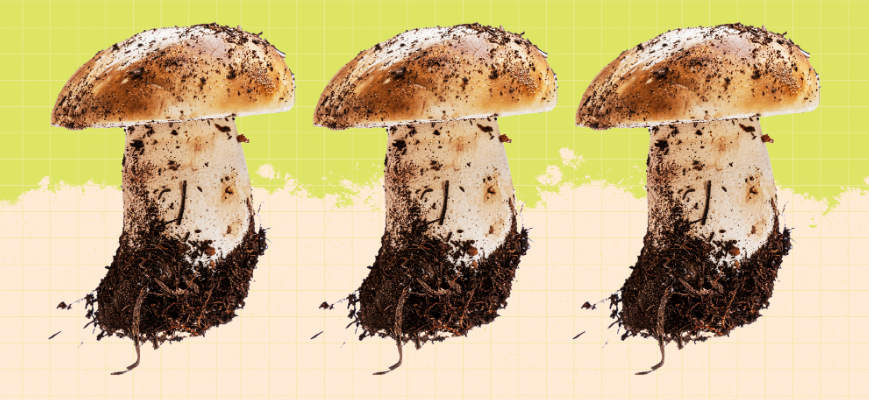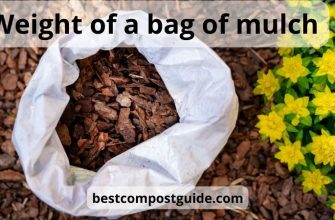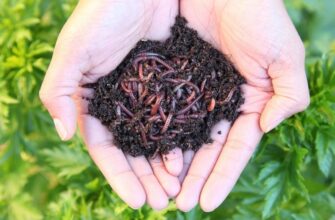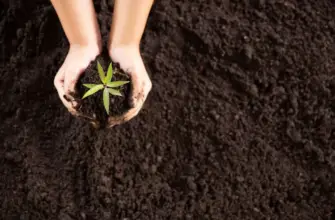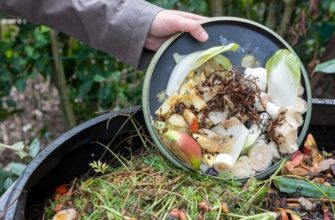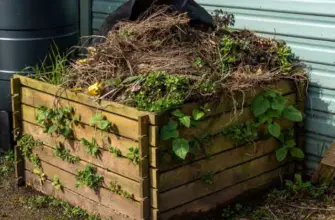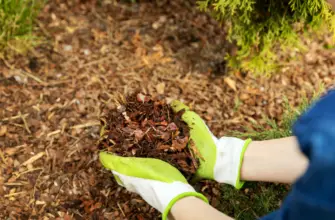As you know, compost plays a big role in gardening. They are often used to grow edible mushrooms at home. You can read more about whether can I do mushroom compost in this article.
- Reasons for mushrooms growing in compost pile
- Does mushroom scraps harm compost pile?
- Why do mushrooms appear in a pot of flowers?
- Varieties of fungi found in compost pile
- What mushrooms can be grown on active compost piles?
- Wood Blue
- Wine cap Stropharia
- Furry ink cap
- Almond mushroom
- Why you should grow mushrooms in compost: the benefits
- Acceleration of the decomposition process
- Mycelium chain formation
- Enriched with nutrients and minerals
- Why should you not grow mushrooms in compost?
- How to get mushrooms out of compost?
- Organic material with iron content
- Compost turning
- Adding humus or worms
- Hot composting
- Is mushroom composting allowed?
- What is mushroom compost?
- Is it allowed to eat mushrooms that have been grown on compost?
- Can you compost cooked mushrooms?
- Can poisonous mushrooms be added?
- Results
Reasons for mushrooms growing in compost pile
Before getting into the question of, whether can I make mushroom compost, it is necessary to identify the main reasons for the mushrooms growing in the compost. When the wood chips or leaves begin to rot, the temperature of the mixture decreases and the moisture content rises. However, weather conditions can also contribute to this.
If it rains heavily, or if your area is dominated by a dry and humid climate, mushrooms can appear not only in the compost pile but also in the compost bin. The main condition is that there should be a process of decay. As you know, not the main part of the fungus is displayed on the surface of the earth.
It is under the ground that a largely hidden mushroom is located, which contributes to a better decomposition of wood or cellulose. For mushrooms to develop well, several conditions must be met. In addition to high humidity, the site should not be illuminated by direct sunlight.
Proper airflow must also be ensured and temperatures maintained between 64 and 75 °F. However, the optimal temperature parameters may vary depending on the types of mushroom scraps.

Does mushroom scraps harm compost pile?
Regardless of the species, all fungi contribute to the decomposition of organic matter. If you notice a few mushrooms growing in the compost pile, that’s a pretty good sign. This speeds up the composting process.
The kingdom of fungi includes yeast, mold, and powdery mildew. Mushrooms and molds often form in the damp compost bin, which contains a lot of decaying material.
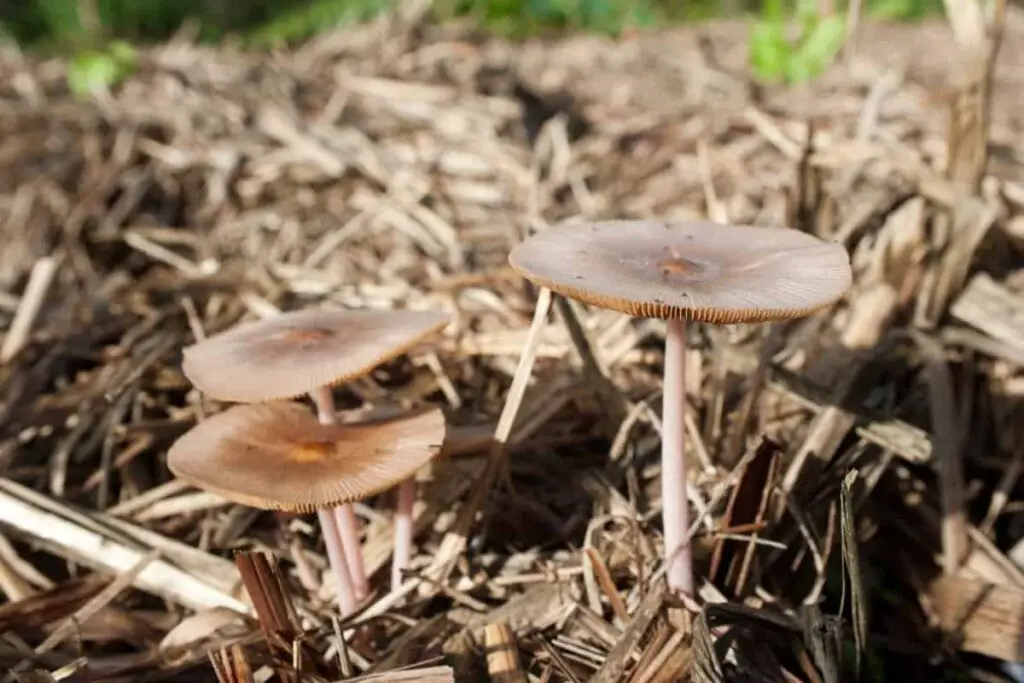
Why do mushrooms appear in a pot of flowers?
Quite often, gardeners notice that mushrooms growing are in pots in which indoor flowers grow. Frequently this happens if the soil that the pot is filled with has a lot of organic matter in its composition. Mushrooms growing in pots do not pose any danger to plants.
On the contrary, they contribute to the decomposition of organic matter in the soil. The purchased mixture may already be supplied with mushroom spores. These are small organisms consisting of one cell. Their mushrooms are used for reproduction. However, there is another reason why fungi infiltrate a potted plant.
Small spores can enter through a window during windy conditions. You can bring them from the street clothes. If there are pets in the house that regularly walk along the street, spores can be carried on the animal’s fur.
Most often in pots, you can see fieldfare. It prefers to thrive in moist and warm environments. It doesn’t look like the kinds of mushrooms you might find in your backyard.

Varieties of fungi found in compost pile
Different types of mushrooms use different organic matter for their nutrition. In this case, preferences may vary, depending on the stage of decomposition. Primary decomposers, which include shiitake mushrooms and oyster mushrooms, prefer to feed on trees that have died recently.
As soon as wood chips or foliage begin to decompose, Stropharia can be seen. After, they are replaced by ant fungi, which are typically found in waste that has begun to decompose. In the end, the presence of secondary decomposers is noted, which prefer to grow on the finished compost.
This category includes champignons or portabella. It is their people who grow on the finished compost pile, which is prepared from straw and litter. You can take both chicken and horse droppings for finished compost. It all depends on your capabilities.
Therefore, when changing the stages of compost decomposition, you can get several varieties of mushrooms.

What mushrooms can be grown on active compost piles?
If you plan to grow mushrooms on a compost pile yourself, then you should pay attention to several main types. You can read more about compost mushrooms below.
Wood Blue
These edible mushrooms have an attractive appearance. Hats can be blue, pink, or lavender. There are wild mushrooms.
You can notice them in mixed forests, where fallen leaves decompose. They use organic matter for food, which has already decomposed a little.
That is why you can start breeding them at home by preparing a compost pile. Sowing on beds that are well-covered with mulch is allowed. This type of mushroom grows well on the waste that is left in the garden: branches, grass clippings, fallen leaves, etc.
Fruiting begins in autumn. Mushrooms have a pleasant earthy flavor and a firm texture. This is a great solution for cooking stews and morning omelets. Due to the dense pulp, the mushrooms are very satisfying.

Wine cap Stropharia
This type of mushroom is quite large. It has a crunchy texture as well as a light nutty flavor. This species is quite common in the gardens of ordinary people. At the same time, it is ideal for beginners who are just starting to learn the basics of mushrooms growing in the open field.
Mushrooms grow quite quickly and are large. Therefore, they are also called “garden giants.”
The culture is very hardy and prefers to grow on all types of tree debris. Wine cap is resistant to adverse environmental factors, including the sun.
If you sow spores in a garden that is distinguished by excellent quality mulch, the yield increases significantly. You can add this type of mushroom to different dishes.

Furry ink cap
You can find the mushrooms growing in the compost pile very often. You can also plant in the soil, which must first be abundantly saturated with manure.
The culture prefers to grow on active compost heaps. The downside is that it does not tolerate heat. If you sow spores in a barn or greenhouse, you have to constantly ventilate.
Hats are collected at a young age. They must be used within a few hours of harvest. After all, immediately, after cutting, the mushrooms begin to digest themselves.
This variety has a pleasant taste and is a bit like asparagus. However, it can be grown for your purposes. For businesses, this option is not suitable because it has a limited shelf life. You can pay attention to this variety if you like different experiments.

Almond mushroom
This species is a bit like champignons familiar to humans. It has an attractive aroma of almonds and has an identical sweetish taste.
Prefers to grow on ready-made compost heaps. There is unpretentiousness in care, which makes the culture the best option for beginners.
Fruiting is observed in summer. This is because this type of mushroom prefers warm weather. However, it has good tolerance to low temperatures, which are observed in most regions at the end of summer.
For mushrooms growing, it is recommended to make small holes, and bury the spores to a depth of 5 inches.
You can plant the mushroom between vegetable crops. This helps maintain the optimal level of humidity at the end of fruiting.
Up to five harvests can be observed during the year. However, the first fruiting yields the best yields.

Why you should grow mushrooms in compost: the benefits
Many people wonder, should I add mushrooms to my garden? It should be understood that mushrooms are not only a food product.
This is a pretty good product that has many other benefits.
Acceleration of the decomposition process
As you know, in the natural environment, mushrooms help to destroy dead organic matter. Often they can cope even with tough materials, including cellulose. Mushrooms help the tree decompose faster.
Mycelium chain formation
If mushrooms began to grow in the compost, then there is mycelium inside the compost heap, presented in the form of threads.
Nutritional components begin to spread through this network. If the enriched mycelium is used for garden maintenance, the ecosystem retains moisture better.
Enriched with nutrients and minerals
Most mushrooms contain copper, potassium, selenium, phosphorus, and vitamin D. When mushrooms growing decompose, all these useful components begin to be absorbed into the compost. Therefore, you can enrich the plants growing in the garden.

Why should you not grow mushrooms in compost?
You need to understand that there are mushrooms that are forbidden to eat. They can cause poisoning and death. If there are pets or small children in the house, the appearance of unknown mushrooms can be a big problem. Therefore, you need to remove them along with the compost from the yard.
No, it won’t kill the fungus. However, the controversy ceases to spread. Therefore, children and animals are safe.

How to get mushrooms out of compost?
Often, gardeners think about how to get mushrooms growing out of the compost. There are several methods for doing this, and you can use any of them.
Organic material with iron content
First, you need to make sure that there is organic material rich in iron. It could be kitchen waste. This contributes to the balance of the components within the compost, so the environment for the development of fungi is unfavorable.
Compost turning
The compost mushrooms heap needs to be turned over periodically. This provokes the destruction of mycelium networks that have already begun to form.
Adding humus or worms
The worms are known to be constantly moving and form tunnels in the compost. This contributes to the destruction of the mycelium, and the mushrooms stop bearing fruit.
Hot composting
To do this, the temperature of the mushroom compost must be maintained at around 140-155 ℉. This does not allow the mushrooms to survive.
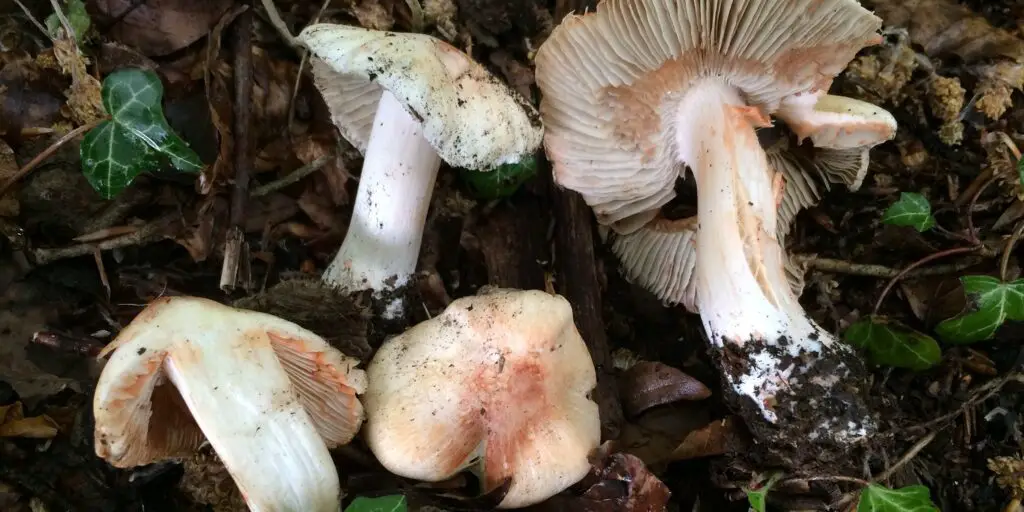
Is mushroom composting allowed?
You can compost mushrooms if necessary, whether there are edible or wild mushrooms. If you add large forest mushrooms to the compost or chopped stems of edible varieties, decomposition increases, so the compost is saturated with all the necessary mineral components.
To make it easier to make a mushroom compost heap, it is recommended to make a hole in the center and pour the mushroom trimmings into it.
Additionally, you can add plant waste or coffee grounds. This helps accelerate decomposition.
After that, it remains to close the pile with fallen leaves or grass clippings. This prevents small children or animals from finding mushrooms.
What is mushroom compost?
Many cannot understand what mushroom compost is. This may apply to compost, which is created specifically for mushrooms growing. However, this is often a description of compost that can be used to maintain a garden.
Compost is often supplied in bags, and is marked as a spent mushroom substrate. The bags contain a spent mushroom substrate that is rich in mycelium.
Many people ask, can you put raw mushrooms in compost? Yes, you can add them. They work on the principle of slow-release organics.
Is it allowed to eat mushrooms that have been grown on compost?
If you know for sure that you have edible mushrooms, you can use them for cooking. If the compost pile is stored in the right conditions, you have the opportunity to get multiple crops of mushrooms.
If you have spread compost around the area, you should be careful in the process of identifying the fungi that appear. After all, even inedible and wild mushrooms that are dangerous to health can sprout.
Can you compost cooked mushrooms?
If you cooked mushrooms with sauces, you should not add them to the compost. If there is a lot of oil in the dish, the compost can spoil.
Fatty foods are difficult to break down, so they do not let air through. If you want to add cooked mushrooms, they must be thoroughly rinsed from oil.
Can poisonous mushrooms be added?
If the compost is warm, you can add mushrooms that are poisonous. Under the influence of heat, most of the harmful spores are destroyed.
However, you have to constantly ensure that the compost warms up for a long time and with high quality. It is best not to take risks, and use only proven species.

Results
As you can see, composting mushrooms is a rather laborious process. This is because the spent mushroom compost must be constantly maintained at the correct temperature, as well as monitor the development of mycelium.
Read also: Can you compost pineapple, composting possibilities and useful compounds for your soil and plants

